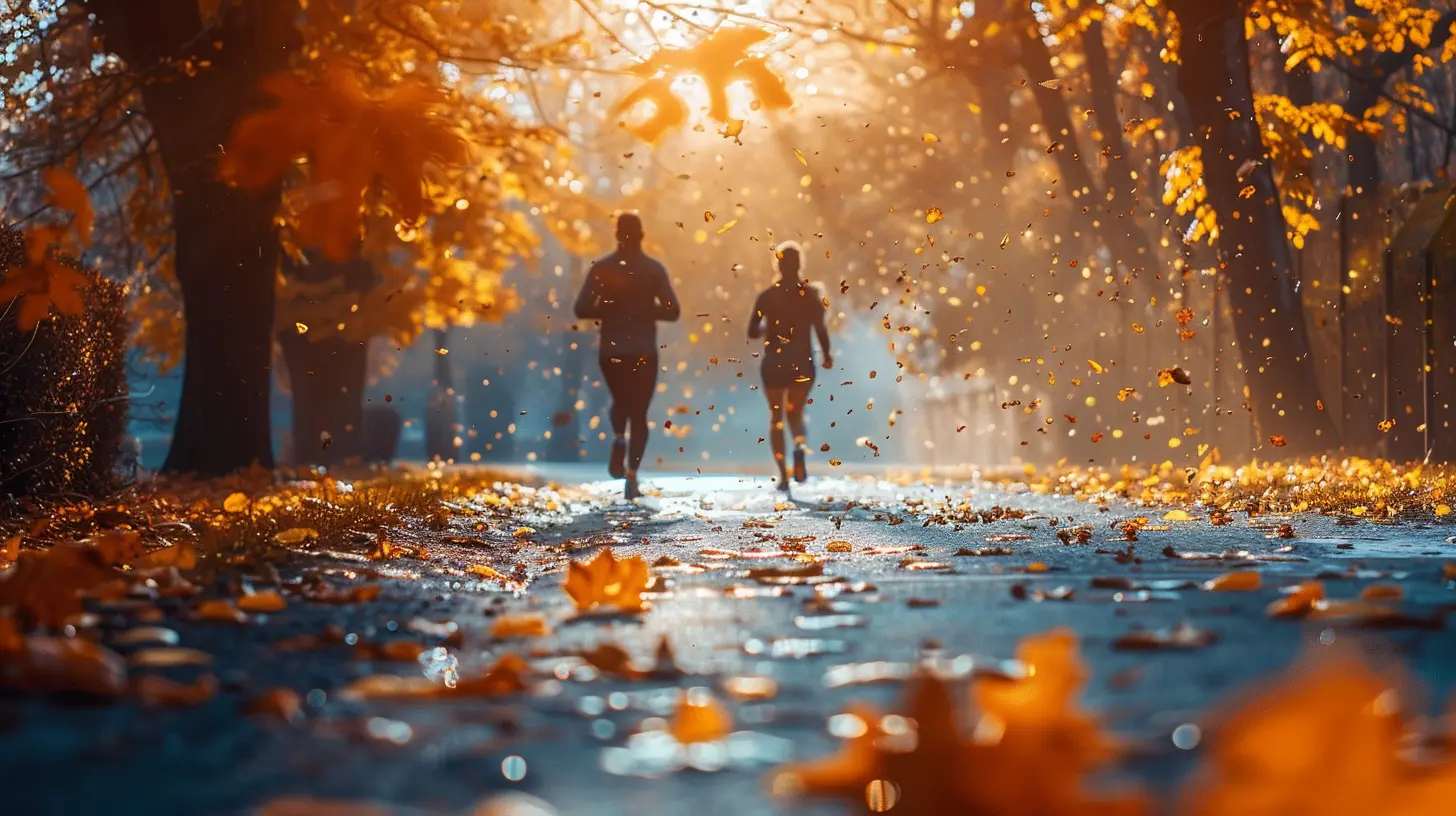Adapting Your Workout Routine for Different Seasons
3 October 2025
Let’s face it — staying consistent with a workout routine year-round can be a challenge. One minute, it’s sunny skies and morning jogs in the park. The next? You’re buried under blankets, struggling to convince yourself that a home workout is worth it. Sound familiar?
Our bodies don’t live in a vacuum. They respond to everything — food, sleep, stress… and especially the seasons. As the temperature, daylight, and weather change, so do our energy levels, motivation, and access to exercise options.
That’s why adapting your workout routine for different seasons isn’t just smart — it’s essential. It’s about working with the seasons, not against them. Let's dive into how to make that happen — season by season.
Why Seasonal Training Matters
Before we get into the nitty-gritty, let’s get one thing clear. Seasonal changes affect not only the environment but also your physical and mental state. Cold can stiffen joints, heat can drain your stamina, shorter days can zap your mood.So why force yourself into the same workout routine year-round when your needs and the world around you are constantly changing?
Adapting your routine means:
- Keeping your workouts fresh and exciting
- Reducing the risk of injury
- Staying consistent without burnout
- Aligning with nature’s rhythm
Now, let’s break it down.
Winter Workouts: Embrace the Chill (But Stay Warm)
When the temperature drops and the sun hides before dinner, motivation can plummet. But winter is not the time to hibernate. It’s a great opportunity to shift gears and try something new.Challenges You Face
- Cold weather can stiffen muscles and joints- Fewer daylight hours = harder to find time
- Risk of slipping or injury outdoors
- General low energy levels due to lack of sunlight
How to Adapt Your Routine
1. Warm-Up Becomes Non-Negotiable
Skip this in the winter, and you’re asking for trouble. Cold muscles are more prone to injury. Spend at least 10-15 minutes on dynamic stretches and light cardio to get your blood flowing.2. Take Advantage of Indoor Workouts
Winter is prime time for hitting the gym, trying virtual fitness classes, or doing at-home workouts. Think yoga, resistance bands, bodyweight circuits, or even dance fitness.3. Try Winter Sports
Make the season fun! Activities like skiing, snowboarding, or ice skating offer killer full-body workouts — and they barely feel like exercise.4. Use Layers Right
Dress in breathable, moisture-wicking layers if you're working out outside. You want to stay warm without overheating. Don't forget gloves and a hat — extremities lose heat fast.5. Boost Your Mood
Consider workouts with a mental uplift — morning yoga with sunrise lamps or power Pilates paired with some upbeat music. Get those endorphins going to fight seasonal blues.
Spring Workouts: Reset and Refresh
Ahhh, spring. The season of renewal. Flowers bloom, the rain freshens the air, and we all feel a bit more human after the winter slog. Your body, just like nature, is ready to thaw, stretch, and move.What Changes in Spring?
- Longer days = more flexibility for outdoor workouts- Warmer weather lifts energy and mood
- Allergy season may flare up (ugh, pollen)
How to Adapt Your Routine
1. Reintroduce Outdoor Cardio
This is the perfect time to bring back runs, hikes, and bike rides. Keep it light at first and build your endurance as your body readjusts.2. Focus on Mobility and Flexibility
Your body might still be tight from winter stiffness. Incorporate mobility drills or try a new yoga style.3. Clean Out Your Fitness Closet
Spring cleaning isn’t just for your home. Update your workout gear. New shoes, fresh leggings, or a water bottle with motivational quotes can give your workout a subtle psychological boost.4. Watch the Weather
April showers are real — but they don’t have to derail you. Have a backup indoor routine for rainy days. That 20-min HIIT session on YouTube? Gold.
Summer Workouts: Soak Up the Sun (Safely)
Long days, bright skies, and tons of energy — summer is often when we feel most motivated to move. But with great sunshine comes great responsibility.Summer Challenges
- Heat and humidity can be draining- Higher risk of dehydration or heat exhaustion
- Overtraining temptation (hello, beach season pressure)
How to Adapt Your Routine
1. Beat the Heat
Schedule workouts early in the morning or later in the evening when it's cooler. Midday sun? Not your friend.2. Hydration Is Key
You lose a lot more water (and electrolytes) in the heat. Sip water before, during, and after your workout. Consider a sports drink if it’s a long, sweaty session.3. Try Water-Based Workouts
Swimming isn't just refreshing — it's an incredible full-body, low-impact workout. Surfing, paddleboarding, or even aqua aerobics can mix things up.4. More Outdoor Options
Parks, trails, boot camps, beach workouts — summer is your playground. Don’t limit yourself to just the gym.5. Wear Proper Clothing
Go with light, breathable fabrics that wick sweat. And don’t skip sunscreen, even for early morning walks or cloudy days.Fall Workouts: Transition and Tune-Up
Fall is the perfect middle ground. Not too hot, not too cold — just right. It’s a great season to switch it up, reflect on your fitness goals, and prepare for the winter ahead.What to Expect in Fall
- Cooler temperatures — great for outdoor workouts- Shorter daylight hours start creeping in
- Back-to-school and work overload might disrupt your rhythm
How to Adapt Your Routine
1. Reset Your Goals
Fall is like a mini New Year. It’s perfect for reevaluating your goals, routines, and what’s working. Need more strength training? Want to try a new class? Go for it.2. Layer Up Again
You might start your workout feeling chilly and end it sweating. Dress in layers you can peel off as you warm up.3. Enjoy the Outdoors — While It Lasts
Take full advantage of trails, paths, and parks. Crisp air and vibrant leaves? Nature's gym never looked better.4. Harvest Your Nutrition
Fall also means seasonal changes in food. Incorporate whole, comforting foods like sweet potatoes, squash, and apples — they’re good fuel.5. Plan Ahead for Winter
Now’s a good time to start thinking about your winter strategy. Stock up on indoor workout equipment or plan a few fitness subscriptions.General Tips for Seasonal Workout Success
No matter the season, keeping these core strategies in mind will help you stay on track:1. Prioritize Recovery
Listen to your body. More intense workouts in one season may require more rest in another. Sleep, hydration, and stretching? Always important.2. Set Seasonal Goals
A marathon in spring or a ski trip in winter? Tailor your training timeline to match your seasonal goals.3. Stay Flexible (Literally and Figuratively)
If bad weather ruins your plan, don’t beat yourself up. Replace that outdoor run with a fun indoor workout or dance session.4. Track Your Progress
Use an app, fitness tracker, or even good ol’ pen and paper. Checking in with yourself keeps motivation high.5. Make It Fun
If your routine feels like a chore, you won’t stick with it. Try new classes, mix up your playlists, or challenge a friend.Final Thoughts: Flow With the Seasons, Not Against Them
Your body isn’t a machine — it’s a living, breathing thing that responds to the world around it. Just like nature, our energy cycles ebb and flow. So instead of seeing seasonal changes as setbacks, look at them as opportunities. Opportunities to try something different, to listen to your body more, and to keep your fitness journey exciting 365 days a year.Whether you're chasing endorphins in spring rain, summer sun, fall leaves, or a winter wonderland — just remember: movement matters. And the best workout routine? The one you can actually do — no matter the season.
all images in this post were generated using AI tools
Category:
ExerciseAuthor:

Angelo McGillivray
Discussion
rate this article
1 comments
Freya McGivern
Great tips! Embrace the season for a refreshing change!
October 6, 2025 at 5:04 AM

Angelo McGillivray
Thank you! Embracing seasonal changes can really boost motivation and keep workouts exciting!


